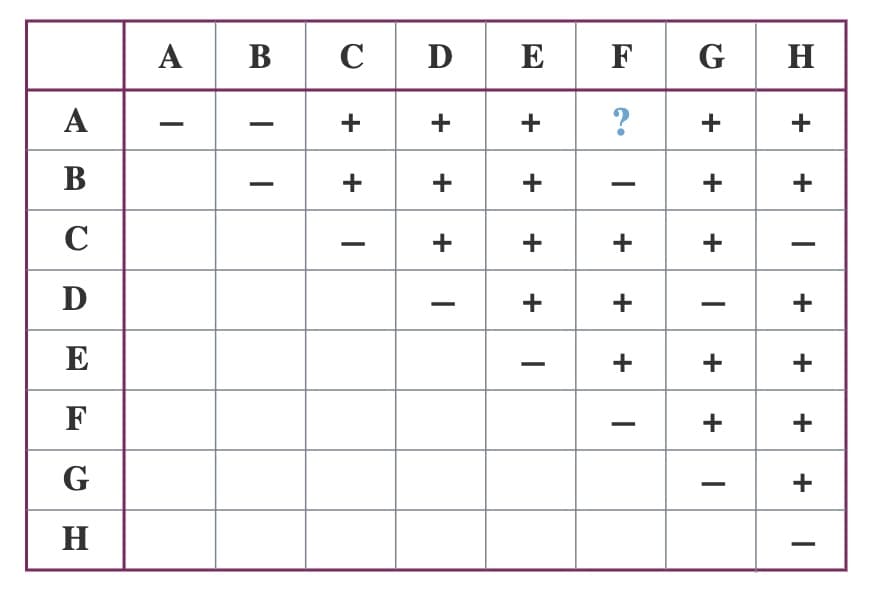You are studying cushion plants in New Zealand: the wild-type cushion plan has a wide canopy. You obtain eight cushion plants that all have narrow canopies caused by a single autosomal recessive mutation. To determine how many genes are defined by these mutations, you mate the plants together and get the results shown in the complementation table below. The “–“ represents plants with narrow canopies and the “+” represents wide canopies. What will the offspring of a cross between plants A and F look like?
You are studying cushion plants in New Zealand: the wild-type cushion plan has a wide canopy. You obtain eight cushion plants that all have narrow canopies caused by a single autosomal recessive mutation. To determine how many genes are defined by these mutations, you mate the plants together and get the results shown in the complementation table below. The “–“ represents plants with narrow canopies and the “+” represents wide canopies. What will the offspring of a cross between plants A and F look like?
Essentials of Pharmacology for Health Professions
7th Edition
ISBN:9781305441620
Author:WOODROW
Publisher:WOODROW
Chapter5: Abbreviations And Systems Of Measurement
Section: Chapter Questions
Problem 12CRQ
Related questions
Question
a) You are studying cushion plants in New Zealand: the wild-type cushion plan has a wide canopy. You obtain eight cushion plants that all have narrow canopies caused by a single autosomal recessive mutation. To determine how many genes are defined by these mutations, you mate the plants together and get the results shown in the complementation table below. The “–“ represents plants with narrow canopies and the “+” represents wide canopies. What will the offspring of a cross between plants A and F look like?
b) Based on the above, how many different genes are defined by the 8 mutant strains?

Transcribed Image Text:cDE
G H
A
B
C
F
A
+
+
?
+
+
В
+
+
+
C
+
+
D
+
+
+
E
+
+
+
F
+
+
G
+
H
+
+
Expert Solution
This question has been solved!
Explore an expertly crafted, step-by-step solution for a thorough understanding of key concepts.
This is a popular solution!
Trending now
This is a popular solution!
Step by step
Solved in 2 steps

Recommended textbooks for you

Essentials of Pharmacology for Health Professions
Nursing
ISBN:
9781305441620
Author:
WOODROW
Publisher:
Cengage

Case Studies In Health Information Management
Biology
ISBN:
9781337676908
Author:
SCHNERING
Publisher:
Cengage


Essentials of Pharmacology for Health Professions
Nursing
ISBN:
9781305441620
Author:
WOODROW
Publisher:
Cengage

Case Studies In Health Information Management
Biology
ISBN:
9781337676908
Author:
SCHNERING
Publisher:
Cengage
